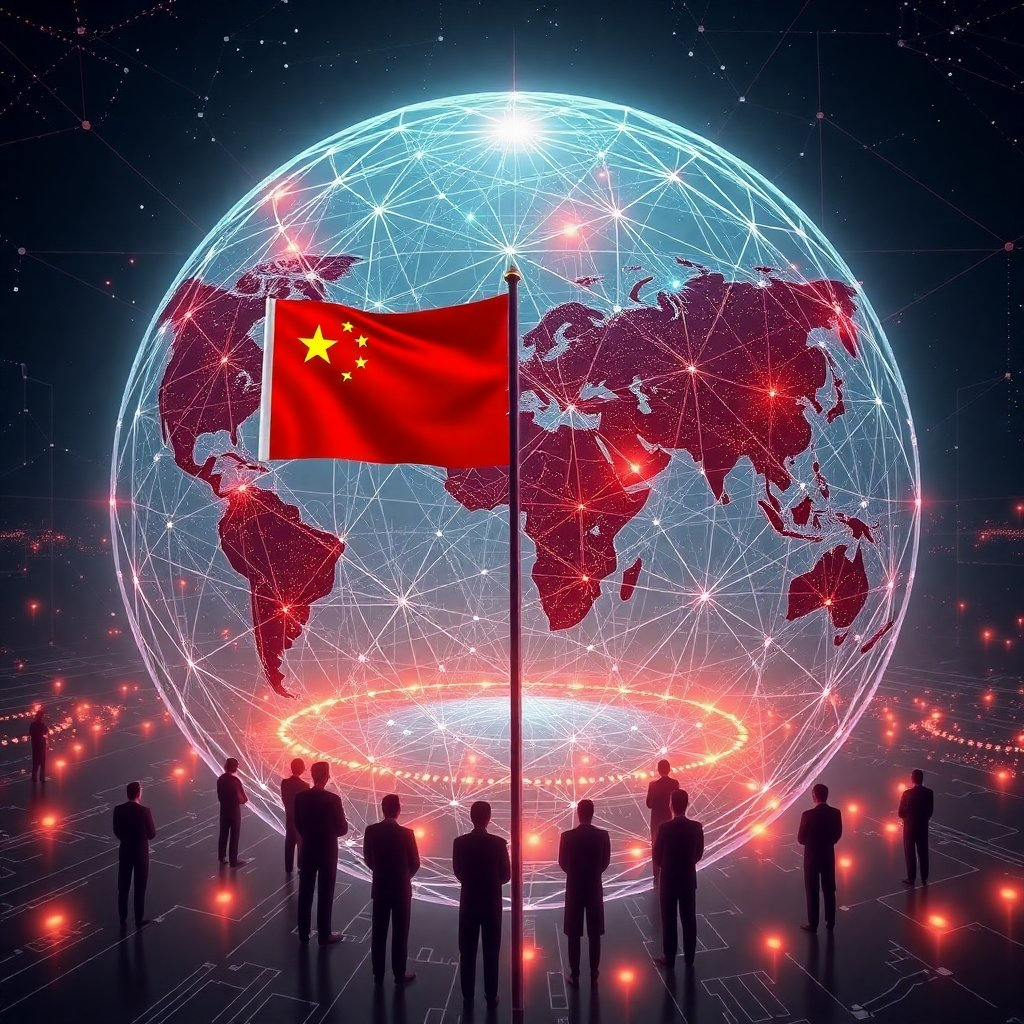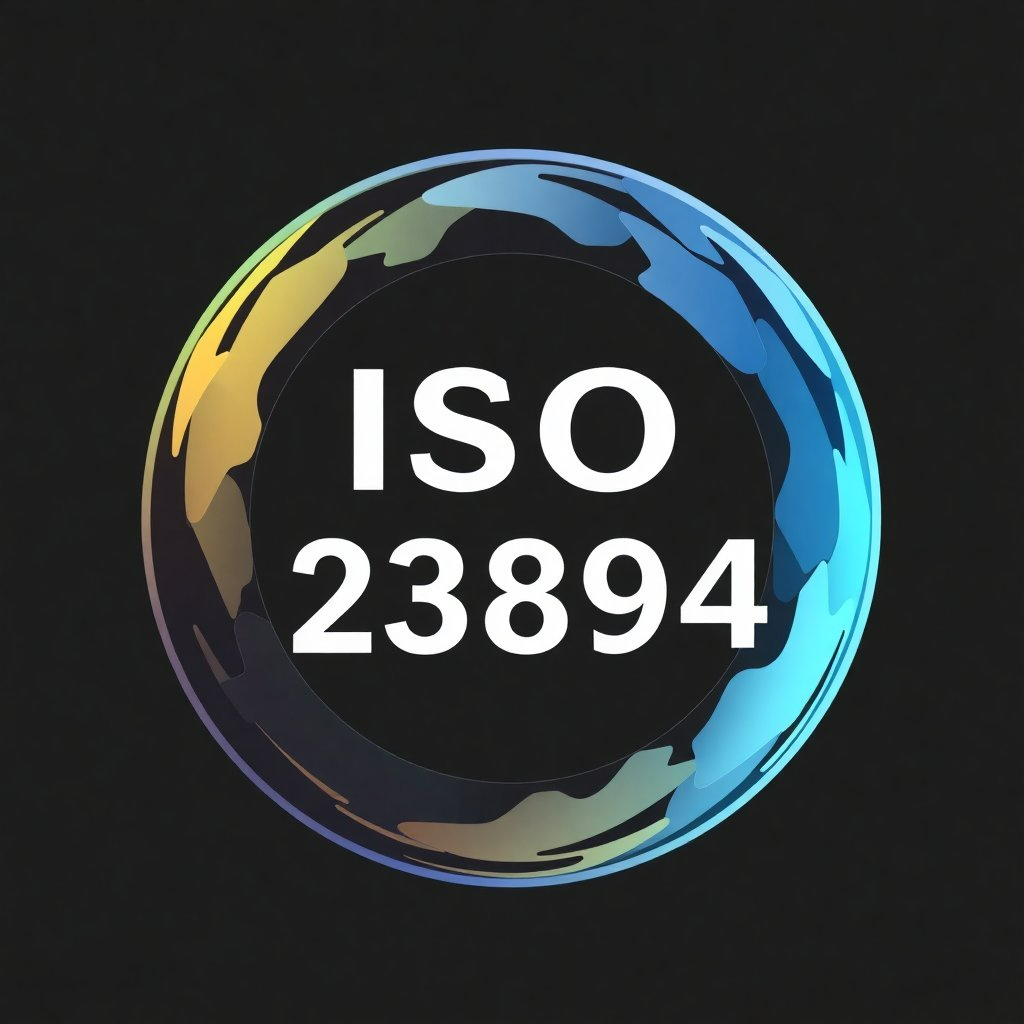Executive Summary

Senior officials navigating AI governance face an increasingly complex landscape of overlapping frameworks, competing coordination claims, and unclear authority structures. This brief maps the operational reality behind coordination rhetoric, revealing significant gaps between stated cooperation and actual implementation.
Key findings:
- Genuine coordination exists primarily within Western democratic networks, centred on OECD processes and G7 initiatives, whilst broader multilateral coordination remains largely performative
- Real decision-making authority resides in Geneva-based technical bodies (ITU, ISO/IEC), not New York political coordination mechanisms (UN)
- The July 2025 US-China action plan competition demonstrates divergent implementation patterns with America achieving domestic wins but facing regulatory deadlines, China advancing capacity-building but struggling with institutional establishment
- Framework proliferation has created coordination fatigue, with officials managing over 200 AI governance instruments globally
- Coordination rhetoric significantly exceeds coordination reality, particularly regarding China-West integration and developing country participation
For senior officials, this analysis suggests prioritising engagement with Geneva technical processes over high-profile UN platforms when seeking actual governance influence. The October-December 2025 period will test credibility of major framework commitments.
Introduction

The proliferation of AI governance frameworks has reached unprecedented levels, creating what officials privately describe as “coordination theatre”—extensive diplomatic activity producing limited operational integration. Understanding which mechanisms wield actual authority versus those providing political signalling becomes essential for effective resource allocation and strategic planning.
This brief examines AI governance coordination through four analytical lenses: documented cross-framework linkages, institutional authority patterns, implementation progress on 2025 commitments, and practical navigation challenges facing senior officials. The analysis prioritises empirical tracking of coordination mechanisms over stated intentions.
The research draws upon official documentation, implementation reports, and coordination mapping across major frameworks including the UN’s new AI governance mechanisms, the competing July 2025 US-China action plans, OECD processes, EU implementation, and regional initiatives through ASEAN and other bodies.
Section I: The Coordination Reality Check
Western Networks Function; Global Integration Falters

OECD-centred coordination demonstrates genuine operational integration. The Organisation’s AI Principles, adopted by 46 countries, serve as foundational architecture for multiple subsequent frameworks. The EU AI Act explicitly incorporates OECD definitions and risk assessment approaches. US Executive Order 14110 (since revoked) referenced OECD frameworks for federal AI governance, whilst the July 2025 “America’s AI Action Plan” maintains alignment with OECD risk management principles.
Concrete coordination mechanisms include shared personnel and processes. The OECD’s AI Group of Experts maintains direct linkages with G7 working groups. The Global Partnership on AI (GPAI), hosted by OECD, includes 29 countries coordinating through four working groups with shared research initiatives and policy recommendations feeding directly into G7 processes.
The International AI Safety Institute Network, established in May 2024, demonstrates operational coordination among 10 founding members (Australia, Canada, EU, France, Japan, Kenya, Singapore, South Korea, UK, US). These institutions share evaluation protocols, coordinate on frontier model assessments, and maintain regular technical exchanges—representing genuine coordination rather than diplomatic consultation.
China’s Parallel Track Reveals Fundamental Limitations

China’s July 2025 “Global AI Governance Action Plan” proposes parallel institutional development rather than integration with existing frameworks. Research identifies no shared working groups between Chinese initiatives and Western-led mechanisms. China’s approach emphasises “democratising AI governance” through separate institutional architecture rather than reforming existing structures.
The proposed Shanghai-based “Global AI Cooperation Organisation” represents institutional competition with Geneva-based coordination mechanisms. Chinese officials explicitly critique “fragmented governance” whilst proposing additional frameworks—revealing coordination philosophy contradictions.
This represents the most significant coordination gap in global AI governance. Despite diplomatic rhetoric about “inclusive multilateralism,” operational coordination between Chinese initiatives and Western frameworks remains minimal. The February 2025 ASEAN Expanded Guide on Generative AI maintains neutrality between US and Chinese approaches, reflecting regional reluctance to choose sides in governance competition.
Developing Country Participation: Structural Limitations Persist
Despite capacity-building initiatives, systematic developing country integration in technical governance remains weak. Analysis reveals that only 7 countries participate across all major non-UN AI governance mechanisms, whilst 118 countries remain excluded from primary coordination networks.
Kenya’s inclusion in the AI Safety Institute Network represents progress, yet broader African participation remains limited to consultative rather than decision-making roles. China’s commitment to hold “10 AI workshops” for developing countries by end-2025 addresses capacity building but not governance authority integration.
Resource constraints explain participation gaps. Technical standards development requires sustained expert engagement that many developing countries cannot maintain. The ITU’s AI for Good platform provides broader participation opportunities but operates through voluntary contributions rather than binding coordination mechanisms.
Section II: Institutional Authority Mapping—Geneva versus New York
Geneva: Where Technical Decisions Happen

Real AI governance authority resides in Geneva-based technical standard-setting organisations. The International Telecommunication Union (ITU) has operated AI governance mechanisms since 2017 through its “AI for Good” platform, engaging 37,000+ contributors across 180+ countries. ITU working groups develop binding telecommunications standards affecting global AI infrastructure deployment.
Real AI governance authority resides in Geneva-based technical standard-setting organisations. The International Telecommunication Union (ITU) has operated AI governance mechanisms since 2017 through its “AI for Good” platform, engaging 37,000+ contributors across 180+ countries. ITU working groups develop binding telecommunications standards affecting global AI infrastructure deployment.
The International Organization for Standardization (ISO) and International Electrotechnical Commission (IEC) Joint Committee SC 42 operates with formal consensus-based authority across 60 countries, producing binding technical standards through five working groups covering AI fundamentals, trustworthiness, and computational approaches.
These organisations wield operational authority through technical specification development. ISO/IEC 23053 (Framework for AI systems using ML) and ISO/IEC 23894 (AI risk management) create binding requirements for industry implementation. ITU-T recommendations on AI infrastructure standards directly affect global deployment capabilities.
New York: Coordination Theatre Without Authority
The UN’s newly established AI governance mechanisms explicitly lack decision-making authority. The Independent International Scientific Panel on AI (40 members) and Global Dialogue on AI Governance function as advisory bodies providing “policy-relevant but non-prescriptive” recommendations. These mechanisms complement rather than supersede existing governance structures.
Resource allocation reveals authority distribution. Geneva institutions receive direct industry funding exceeding $50 billion (ITU Partner2Connect initiatives), whilst UN AI mechanisms operate without dedicated budgets, relying on assessed contributions and voluntary funding.
Senior participation patterns confirm this divide: Geneva attracts technical experts, industry leadership, and standards bodies, whilst New York engages political representatives and diplomatic missions without operational authority over AI deployment or standards.
Institutional Bifurcation Creates Coordination Challenges
The Secretary-General acknowledges connectivity problems between New York political processes and Geneva technical development. Efforts to bridge institutional gaps through rotating meeting locations (Geneva 2026, New York 2027 for Global Dialogue sessions) represent institutional compromise rather than authority integration.
This bifurcation explains why press attention focuses on UN initiatives whilst operational coordination occurs through less visible Geneva technical processes. Officials seeking governance influence must navigate both systems whilst recognising their fundamentally different authority structures.
Section III: Implementation Gap Intelligence—Promise vs Performance
US Action Plan: Early Wins, Pending Deadlines
America’s July 2025 AI Action Plan demonstrates strong early implementation on technology deployment initiatives. The GSA successfully launched USAi.gov in August 2025, providing federal agencies with secure generative AI capabilities. Updated federal procurement guidance streamlines government AI adoption whilst maintaining security requirements.
However, critical regulatory frameworks remain pending with key credibility tests approaching. The “American AI Exports Program” faces October 2025 deadline for initial implementation. OMB guidance on “unbiased AI” procurement requirements awaits November 2025 publication. NIST AI Risk Management Framework revisions removing references to “misinformation” and “climate change” remain incomplete eight weeks post-announcement.
Implementation challenges centre on federal coordination complexity. The action plan requires coordination across 90+ policy actions spanning multiple departments. Success depends on Chief AI Officer councils and inter-agency governance structures that remain under development.
China’s Approach: Capacity Building Over Institutional Establishment
China’s parallel July 2025 action plan emphasises international relationship development through capacity-building programmes. Implementation focuses on bilateral cooperation and technical assistance rather than domestic regulatory development. Ongoing workshops for developing countries build on December 2024 Shanghai initiatives involving 40+ countries.
The proposed “Global AI Cooperation Organisation” remains aspirational eight weeks post-announcement. No concrete establishment timeline, operational framework, or funding mechanism has been announced. Chinese officials describe “consultations with stakeholders” but provide no institutional development schedule.
China’s year-end commitment to 10 developing country workshops represents the key implementation test, alongside progress on proposed global data-sharing platforms which remain conceptual rather than operational.
Divergent Strategic Approaches Limit Coordination Potential
The analysis reveals fundamentally different implementation philosophies: America prioritising domestic technological capabilities and export-oriented strategies versus China emphasising multilateral governance development and capacity-building cooperation. These divergent approaches suggest limited coordination potential between the July 2025 competing frameworks.
Section IV: Framework Proliferation—The Official’s Navigation Challenge
Massive Proliferation Creates Coordination Burdens

Research identifies over 200 AI governance frameworks globally, creating complex navigation requirements for senior officials. These range from binding legal instruments (EU AI Act) to voluntary principles (OECD) to industry self-regulation initiatives across multiple jurisdictions.
Jurisdictional complexity compounds coordination challenges. Organisations operating internationally face contradictory requirements: the EU AI Act’s comprehensive regulatory approach versus America’s sectoral frameworks; China’s content control mandates versus Western transparency requirements; varying definitions of “high-risk” AI systems across jurisdictions.
Industry reports highlight compliance costs and innovation delays from regulatory fragmentation. The UK Government acknowledges industry warnings that “regulatory incoherence could stifle innovation and competition.”
Successful Navigation Strategies Emerge
Adaptive governance approaches show greater effectiveness than rigid compliance frameworks. The Netherlands’ experience with hybrid APIs addressing EU INSPIRE Directive incompatibilities demonstrates costs of inflexible regulatory specifications applied to machine learning systems.
Network-based coordination demonstrates resilience over centralised approaches. The G7 Hiroshima Process successfully expanded from 7 to 49 countries through flexible partnership structures rather than binding institutional requirements. Participating countries adopt principles whilst maintaining implementation flexibility.
Resource and Expertise Constraints
Government capacity limitations constrain effective framework navigation. Agency reports highlight critical staffing challenges with difficulty attracting AI talent comparable to private sector capabilities. Officials must navigate “complex rules instead of creating new technologies.”
Cross-functional coordination requirements demand extensive inter-agency collaboration, particularly burdensome for smaller jurisdictions lacking technical expertise. The US implementation requires Chief AI Officer councils across federal departments—institutional capacity many countries cannot replicate.
Conclusions and Strategic Implications
This analysis reveals fundamental disconnects between coordination rhetoric and operational reality in global AI governance. Genuine coordination operates primarily through established multilateral institutions among aligned democratic partners, whilst broader global coordination remains largely performative.
Key Strategic Insights:
1. Geneva-New York Bifurcation Shapes Authority Distribution Real technical decision-making occurs through Geneva-based standards organisations whilst New York political coordination provides consultation without binding authority. Officials seeking governance influence should prioritise Geneva engagement over high-profile UN platforms.
2. Framework Competition Reflects Broader Geopolitical Tensions The US-China July 2025 action plan competition demonstrates coordination limitations extending beyond technical disagreements to fundamental governance philosophy differences. Expecting meaningful coordination between these frameworks appears unrealistic in the near term.
3. Operational Coordination Requires Institutional Foundation Successful coordination builds on existing multilateral institutions (OECD, G7, ISO/IEC) rather than creating parallel structures. The most effective improvements will likely emerge through strengthening established networks rather than establishing additional mechanisms.
4. October-December 2025 Represents Critical Testing Period Both US regulatory deadline compliance and China’s capacity-building commitments face year-end implementation tests. Success or failure will significantly affect credibility assessments for both nations’ governance frameworks moving into 2026.
Recommendations for Officials:
- Prioritise Geneva technical engagement over New York political participation when seeking operational governance influence
- Build coordination capacity through existing multilateral networks rather than investing in new institutional development
- Plan for divergent US-China governance ecosystems rather than expecting meaningful bilateral coordination
- Monitor October-December 2025 implementation results as indicators of framework credibility and sustainability
The proliferation of AI governance frameworks will likely continue, making effective navigation strategies increasingly essential for senior officials managing international coordination responsibilities. Understanding authority distribution and implementation capacity remains crucial for resource allocation and strategic planning decisions.
This Strategic Intelligence Brief represents analysis based on publicly available information and does not constitute policy recommendations. ISAR Global provides process intelligence to support informed decision-making by senior officials navigating international AI governance coordination mechanisms.
Leave a Reply